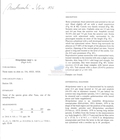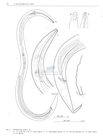Nemys taxon details
Molgolaimus tanai Muthumbi & Vincx, 1996
221182 (urn:lsid:marinespecies.org:taxname:221182)
accepted
Species
marine, fresh, terrestrial
Muthumbi, A. W.; Vincx, M. (1996). Nematodes from the Indian Ocean: description of six new species of the genus Molgolaimus Ditlevsen, 1921 (Nematoda: Desmodoridae). <em>Bulletin de l'institut Royal dae Sciences Naturelles de Belgique. Biologie.</em> 66: 17 - 28. (look up in IMIS) [details] Available for editors  [request]
[request]
Description Characterised by its cephalic setae and amphids located behind the anterior end, long slender spicules, a complex...
Description Characterised by its cephalic setae and amphids located behind the anterior end, long slender spicules, a complex gubernaculum with lateral pieces and lacks supplements. [details]
Nemys eds. (2025). Nemys: World Database of Nematodes. Molgolaimus tanai Muthumbi & Vincx, 1996. Accessed at: https://nemys.ugent.be/aphia.php?p=taxdetails&id=221182 on 2025-05-05
original description
Muthumbi, A. W.; Vincx, M. (1996). Nematodes from the Indian Ocean: description of six new species of the genus Molgolaimus Ditlevsen, 1921 (Nematoda: Desmodoridae). <em>Bulletin de l'institut Royal dae Sciences Naturelles de Belgique. Biologie.</em> 66: 17 - 28. (look up in IMIS) [details] Available for editors  [request]
[request]
additional source Fonseca, G.; Vanreusel, A.; Decraemer, W. (2006). Taxonomy and biogeography of Molgolaimus Ditlevsen, 1921 (Nematoda: Chromadoria) with reference to the origins of deep sea nematodes. <em>Antarctic Science.</em> 18(01): 23-50., available online at https://doi.org/10.1017/s0954102006000034 [details] Available for editors [request]
[request]
additional source Fonseca, G.; Vanreusel, A.; Decraemer, W. (2006). Taxonomy and biogeography of Molgolaimus Ditlevsen, 1921 (Nematoda: Chromadoria) with reference to the origins of deep sea nematodes. <em>Antarctic Science.</em> 18(01): 23-50., available online at https://doi.org/10.1017/s0954102006000034 [details] Available for editors
 Present
Present  Inaccurate
Inaccurate  Introduced: alien
Introduced: alien  Containing type locality
Containing type locality
Unreviewed
Description Characterised by its cephalic setae and amphids located behind the anterior end, long slender spicules, a complex gubernaculum with lateral pieces and lacks supplements. [details]


